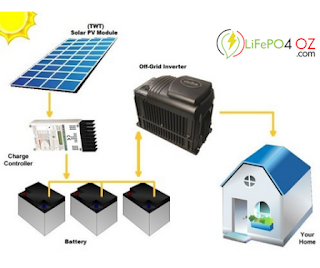Essential Uses of LiFePO4 Battery
Are you peeking for a battery that will provide you with better performance, safety, and durability benefits in one? Then LiFePO4 batteries are the ideal option for you. These batteries are also cost-effective and offer a myriad of advantages to the user.
The Lithium-ion battery is the type of battery that carries ions from the negative to the positive side while charging. The small red balls that occur in the batteries are called lithium ions. They manage to move back and forth to keep the system running. In this blog, you will get a deeper insight into a LiFePO4 battery Australia operates.
1. Motion of the Ions
If you pay close watch, you will see that the lithium ions are on the positive side of the battery, which is called an electrode. If you have a fully charged battery - the lithium ions are stored in the negative electrode carbon.
2. Charging the Battery
While charging, the lithium ions move through the middle membrane to the other electrode on the right side. This membrane is produced from a distinct type of plastic called a polymer. It has multiple tiny pores in it, which makes it easier for the ions to pass through. The negative side has a lattice that contains carbon atoms. They can perform the trapping and retention of the ions that try to transfer to the different sides.
3. Discharging the Battery
While discharging the battery, it does the same thing but in reverse order. When electrons flow via the negative electrode, then it makes the lithium ions move once again. They move through the membrane and go back to the essence called the iron-phosphate lattice. Also, they get stored on the other side as long as the battery is charged similarly.
4. Construction Method
As far as the building of these units is concerned, know that they are constructed of thin layers of copper foils, polymer, and aluminum. The chemicals are pasted on the layers. In most cases, they are rolled like jelly rolls and stored in a steel canister. It is accomplished the same as in an AA battery.
5. Replacement
So, the 12 volts of lithium-ion batteries used in various devices get their power from many of these cells. They are connected in similarity and series to raise the amp-hour capacity and voltage. Per cell produces 3.3 volts, give or take. Thus, if you have four of these cells connected in series, you will get 13.2 volts in total. So, if you want to return a 12V lead-acid battery pack, these battery packs are your best bet.
In short, if you want to know how a LiFePO4 battery works, you can get the essential know-how by reading this article. If you like to buy these batteries, we suggest that you contact a custom-made one to meet your needs. Hopefully, this blog will help you get a most-useful sense of these units.




Comments
Post a Comment